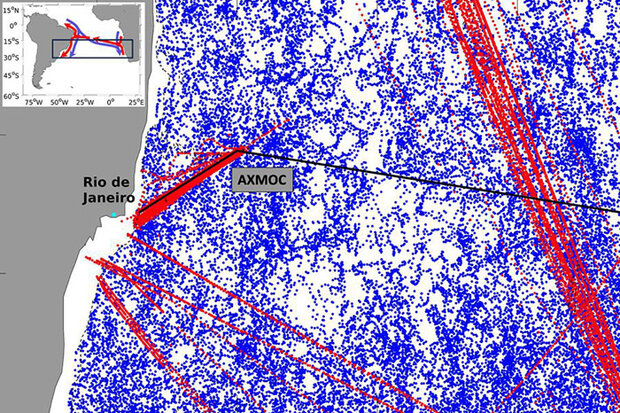New mapping method uses sustained observations to estimate AMOC at 22.5°S

The study uses Argo floats (blue) and high-density expendable bathythermograph (XBT) transects (red) to take in situ measurements. Credit: doi:10.1029/2023JC020010

The study uses Argo floats (blue) and high-density expendable bathythermograph (XBT) transects (red) to take in situ measurements. Credit: doi:10.1029/2023JC020010
Changes in the Atlantic Meridional Overturning Circulation (AMOC) and its transport of heat can affect climate and weather patterns, regional sea levels, and ecosystems. A new study led by Ivenis Pita, a University of Miami PhD student working at NOAA’s Atlantic Oceanographic and Meteorological Laboratory/ the Cooperative Institute of Marine and Atmospheric Studies (CIMAS), is the first to estimate the AMOC and heat transport at 22.5°S in the South Atlantic, demonstrating the importance of sustained in situ observations to monitor the state of the AMOC.
The AMOC refers to an important part of the global ocean circulation system that moves water northwards and southwards within the Atlantic Ocean, connecting upper and deep water flows across the globe. The AMOC controls the transport of heat, freshwater, carbon, and other properties across the basin, and the South Atlantic plays an important role in the stability of this system. Despite this importance, direct measurements of the AMOC are limited in the South Atlantic.
This study presents a new mapping method to estimate the AMOC at 22.5°S. The method is based on sustained ocean observations: a high-density expendable bathythermograph (XBT) transect to resolve the strong currents in the western boundary; low density Argo profiling floats across the basin; and satellite sea level data to determine the mapping parameters and errors associated with these estimates. This observing system was named AXMOC (for Argo-XBT-MOC), and it can be applied for other regions in the globe.